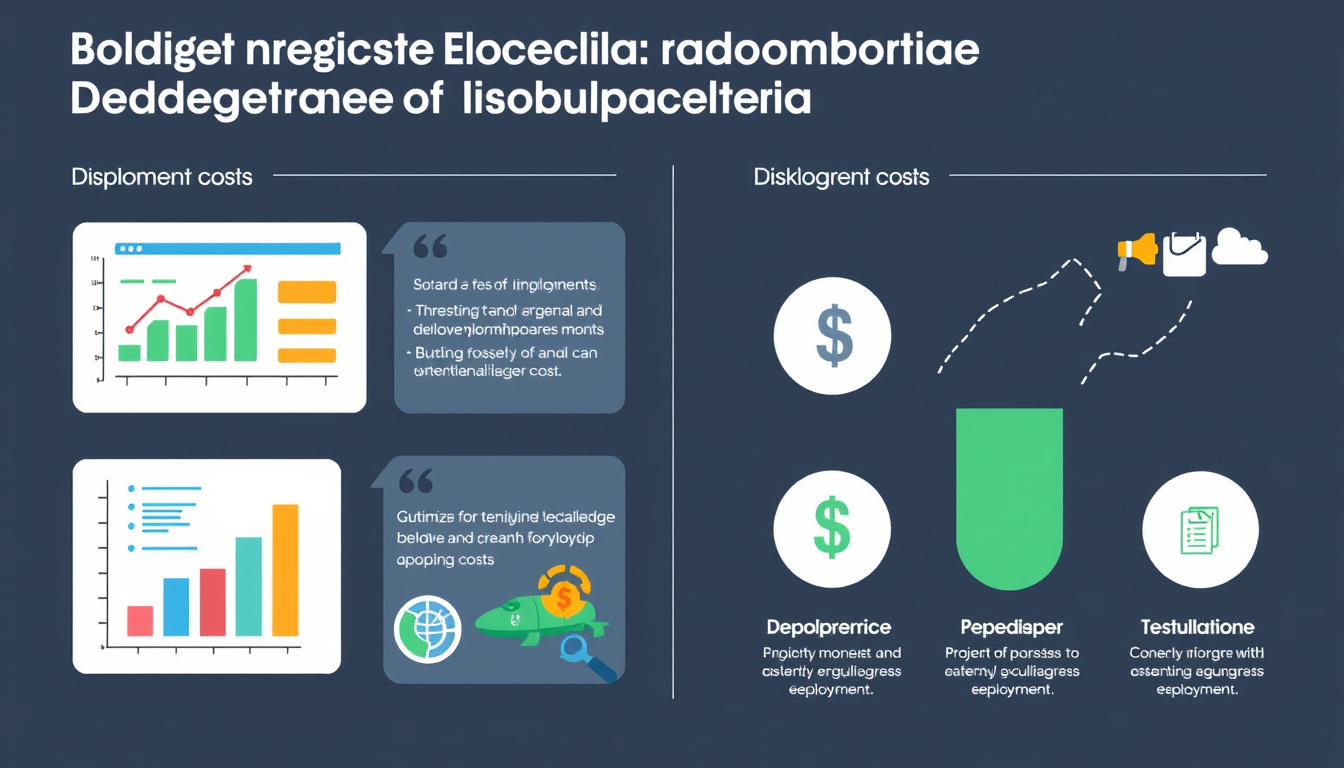Deployment costs are a critical factor in the financial planning of software development projects. Whether you’re a startup launching a new application or an established company scaling your infrastructure, understanding and managing these costs can significantly influence your bottom line. This article will explore how deployment costs are measured, factors that contribute to them, and strategies for optimizing your expenses.

Understanding Deployment Costs
At its core, deployment cost refers to the total expenses incurred in successfully releasing a software application into a production environment. These costs can vary widely depending on several factors, including the technology stack, the number of environments, and the scale of the operation.
Measuring Costs
The cost per deployment is a common metric used to evaluate the expenses associated with deploying software. It is calculated using the following formula:
Cost per Deployment = Development Costs / Number of Successful Deployments
In this formula, development costs encompass all expenses related to the creation, review, and delivery of code over a specific period. To get an accurate figure, it’s essential to account for only those contributors actively involved in the deployment process within the last 90 days. This precise calculation helps organizations gauge the financial impact of their deployment activities and identify areas for improvement.
Factors Influencing Deployment Costs
Several elements can affect deployment costs, including:
-
Technology Stack:
- The choice of backend services, databases, and frontend frameworks can impact costs significantly. For example, utilizing serverless architectures can reduce infrastructure expenses but may introduce higher costs per request.
-
Hosting Provider:
- Different cloud providers offer various pricing models. For instance, while using platforms like Heroku might have been cost-effective in the past, changes to their pricing strategies can lead to increased costs. Community discussions reveal a common experience where developers report monthly expenses of around $5 per project with providers like Digital Ocean for backend services.
-
Development Team Composition:
- The size and experience level of your development team can also contribute to costs. More experienced developers may command higher salaries but could potentially reduce the time needed for deployments, impacting overall cost efficiency.
-
Frequency of Deployments:
- Frequent deployment cycles, characteristic of agile software development, can lead to lower costs per deployment due to increased efficiency. Companies that release updates regularly often find they can spread their fixed development costs over a higher number of deployments, thus driving down the average cost.
Strategies for Cost Optimization
To manage and reduce deployment costs effectively, consider implementing the following strategies:
-
Automate Deployment Processes:
- Utilizing Continuous Integration/Continuous Deployment (CI/CD) pipelines can streamline the deployment process, reducing manual errors and unnecessary delays. Automation tools can significantly cut down on labor costs associated with deployments.
-
Optimize Resource Usage:
- Regularly assess your infrastructure and adjust resources to align with actual usage. For instance, scaling down resources during low traffic periods can lead to substantial savings.
-
Leverage Containerization:
- Technologies like Docker can encapsulate applications in containers, making it easier to manage dependencies and deploy applications consistently across various environments, thus reducing potential deployment failures.
-
Monitor and Analyze Costs:
- Implement monitoring tools to track deployment costs over time. By analyzing this data, teams can identify trends, inefficiencies, and areas where costs can be reduced.
-
Negotiate with Service Providers:
- Engage in discussions with your hosting and service providers to secure better pricing based on your use cases and growth potential.
Conclusion
Understanding and managing deployment costs is vital for any organization looking to maximize the effectiveness and efficiency of its software development process. By systematically measuring these costs, recognizing influencing factors, and applying strategic optimization techniques, organizations can enhance their budget management and overall operational performance. As technology continues to evolve, staying aware of these costs and effectively managing them will be key to driving success in software deployment initiatives.



